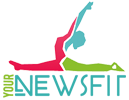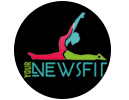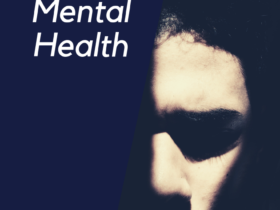Samitivej Hospital is dedicated to the good health and wellbeing of our children, and indeed treat children from all over the world. The hospital’s world leading pediatric medical teams strive to relieve pain and suffering in the young with an unequalled level of caring professionalism.
Pediatrics is complex and multi-faceted area of medicine and at Samitivej Hospital specialist teams have been assembled to focus on each of those facets. Orthopedics is one such facet with an assembled team of professionals specializing the diagnosis and treatment of the bones, joints, and ligaments, tendons and muscles in young people.
Sadly, some children are born with orthopedic issues. These problems need to be diagnosed and treated early in an effort to stave off long term and permanent disability. Other issues may manifest themselves later as a result of disease or injury.
Muscle strains, torn tendons and ligaments and diseases are all addressed by Samitivej Hospital’s skilled professionals. Be it the cranium, the spine, hip, limbs or the smallest digit, all issues are treated with the same care and professionalism by dedicated practitioners.
Probably the most common orthopedic problem a child will face is that of a broken bone, typically an arm or leg. Although common, breaks of bones can in fact be quit complex, and not all breaks are the same. At Samitivej Hospital’s dedicated Pediatric Orthopedic Clinic, breakages can be classified in any one of ten ways. The ten classifications are:
Greenstick Fracture
With this type of fracture, part of the bone breaks away from the rest, but the bone doesn’t break entirely. This form of fracture is common in very young children where the bones are still soft, this softness often results in the bone bending at the point of fracture.
Spiral Fracture
A spiral fracture comes about via a twisting or rotating of the limb. This circular wrenching results in a clean break and the bone is left in two pieces.
Pathological Fracture
Metabolic bone disorders or conditions such as osteomyelitis, osteosarcoma, osteoporosis and arthritis will very often lead to bone breakages due to a weakening of the bones by the medical condition.
Avulsion Fracture
This is where a bone breaks at the point at which it attaches to a ligament or tendon. With an avulsion fracture the small part of the fracture will remain attached to the tendon or ligament.
Transverse Fracture
When a bone suffers a perpendicular impact injury the break will usually be at 90 degrees across the bone, this is what is referred to as a transverse fracture.
Stable Fracture
With a stable fracture the bone will maintain its normal alignment after having been cleanly broken into two parts.
Comminuted Fracture
This is the result of excessive trauma to the bone, such as seen as the result of a car accident. This is why many of comminuted fractures are seen in the hands and feet.
Oblique Fracture
This form of fracture results in a visible deformation under the skin due to the bone breaking at an acute angle and is usually seen in the longer of the body’s bones, the femur and tibia.
Compound Fracture
This probably the most severe of all breakages. It is when, as the bone breaks, it pierces through the skin, making the broken bone visible.
Hairline Fracture
This is also known as a stress fracture and usually affects the legs and feet. This fracture comes about through repetitive strain and is often experienced by athletes, usually when training and workouts are suddenly increased.
Broken Bones-Treatments
The most common treatment for broken bones is the ubiquitous plaster cast. Although very often made from fiberglass, the cast immobilizes the bones and maintains the correct alignment of the broken faces of the bone, allowing it to knit and heal. Braces and splints are alternatives to achieve the same result. Initially, following the injury, these may be temporary in order to allow time for any swelling to reduce prior to fitting the full cast.
Although less common than it used to be, traction is still an option that can be used in the treatment of broken bones. With traction, weights are used to maintain the alignment of the broken bone, and is often used prior to surgery.
Surgery is less common as part of the overall treatment of broken bones, but, at time, is necessary. Normally this will involve the alignment of the broken parts of the bone being secured in place with surgical screws or pins. Plates and rods may also be employed to strengthen the area around the break.
Medication and physical therapy are very likely to be necessary after the initial healing of the break in order to reduce pain and to aid in building back strength and mobility. Samitivej Hospital’s Pediatric Orthopedic Clinic put great store in the importance of post treatment therapy for young patients as they know it reduces the risk of longer term complications for the patient.
Bone Infections
Bone infections are not uncommon in young people. One such infection is brachial plexus. This can occur in infants following a difficult birth delivery. The brachial plexus is a cluster of nerves which sends signals from the spinal cord facilitating the use of the shoulders, arms and hands. During a difficult birth these can become stretched or compressed. Rarely, but far more seriously, these nerves can be torn away from the spinal cord.
Brachial Plexus Injury-Treatment
Brachial plexus injuries require surgical procedures to repair the damage. These procedures include neurolysis which is the removal of scar tissue that may be surrounding a nerve. Neuroma excision. If the neuroma is enlarged it will need to be removed, the nerve will then require reattaching, usually by grafting.
Nerve grafting is used when the gap between the ends of nerves is too great resulting in tension free end-to-end repair techniques are not possible. Neurotization is a technique that involves the use of donor nerves with the roots being attached to the spinal cord.
The Pediatric Orthopedic Clinic at Samitivej Hospital has an accredited surgical team second to none, versed and skilled in the intricacies of diagnostics, surgical and non-surgical treatments, medication and post treatment therapy. Their teams of professionals have restored and maintained the quality of life for thousands of young people from across the world.











